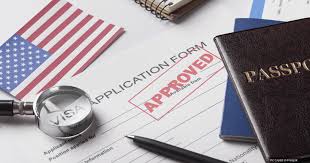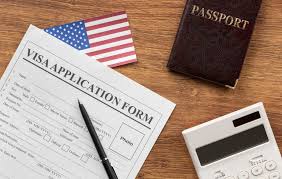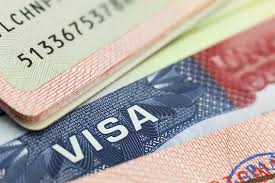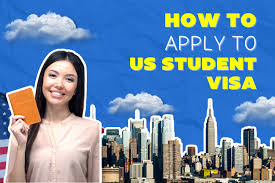US Student Visa Application Process

For international students wishing to study in the United States, the F-1 Student Visa is the most common visa issued. The F-1 visa allows foreign students to attend U.S. universities, colleges, high schools, language programs, and other academic institutions. The process of obtaining a U.S. student visa can be complex and requires careful preparation. However, with the right knowledge and planning, you can navigate this process smoothly.
This guide will walk you through the U.S. student visa application process, from the initial steps to getting approved for your visa. Whether you’re applying to a top university or attending an English language program, this article covers everything you need to know to start your educational journey in the U.S.
1. Types of US Student Visas
Before diving into the application process, it’s important to understand the different types of student visas available to international students:
- F-1 Visa: This is the most common visa for students enrolled in academic programs such as universities, colleges, or English language programs. It allows full-time study in the U.S.
- M-1 Visa: This visa is for students enrolled in non-academic or vocational studies. It is typically for students pursuing technical training or other types of non-degree programs.
- J-1 Visa: The J-1 visa is designated for exchange visitors who are part of a cultural exchange program. This includes students, scholars, and other professionals engaging in educational and cultural exchanges.
Most international students will be applying for the F-1 visa unless they are enrolling in vocational training or participating in an exchange program.
2. Eligibility Requirements for a US Student Visa
To apply for a U.S. student visa, you must meet the eligibility criteria. The key requirements include:
- Acceptance by a U.S. school: You must be accepted into a U.S. educational institution that is certified by the Student and Exchange Visitor Program (SEVP). Your school will send you an I-20 form, which is required for the visa application.
- Sufficient financial resources: You need to prove that you have enough financial resources to cover your tuition, living expenses, and other associated costs while studying in the U.S. This may involve showing bank statements, affidavits of support, or scholarship offers.
- Intention to return to your home country: You must show that you intend to return to your home country after completing your studies in the U.S. Strong ties to your home country, such as family, property, or employment prospects, will help demonstrate this.
- Good academic standing: Your academic credentials should meet the requirements of the U.S. institution where you have been accepted. You may be asked to provide academic transcripts, test scores, and letters of recommendation.
3. How to Apply for a US Student Visa
The process of applying for a U.S. student visa involves several steps. Let’s take a closer look at each stage:
3.1 Step 1: Obtain Your Form I-20
The first step in the visa application process is to get your Form I-20, which is issued by the U.S. school that has accepted you. This form is crucial for the F-1 visa application as it contains important details about your academic program, the school you’ll be attending, and other relevant information.
Once you’ve been accepted into a U.S. school, you will need to provide the school with documentation that proves your financial ability to pay for your education. After reviewing this information, the school will issue you the I-20 form, which is required to apply for the student visa.
3.2 Step 2: Pay the SEVIS Fee
Before applying for the visa, you must pay the SEVIS (Student and Exchange Visitor Information System) fee. This fee helps fund the U.S. government’s student visa monitoring program. The fee amount for the F-1 visa is currently $350.
You can pay the SEVIS fee online through the FMJFee website and will receive a receipt of payment. You will need to show this receipt when you attend your visa interview. The SEVIS fee payment must be made at least 3 days before your visa interview.
3.3 Step 3: Complete the DS-160 Form
The next step in the process is to complete the DS-160 form, the online non-immigrant visa application form. This form collects personal information, including details about your background, travel plans, and education history. You will also be asked to upload a recent passport-sized photograph that meets U.S. visa photo requirements.
Once you have completed the DS-160 form, you will receive a confirmation page with a barcode. You will need to print this confirmation page and bring it with you to your visa interview.
3.4 Step 4: Schedule a Visa Interview
After submitting your DS-160 form and paying the SEVIS fee, the next step is to schedule your visa interview at the nearest U.S. Embassy or Consulate. Visa appointments can be scheduled through the embassy’s website or by phone, depending on the location. Be sure to check the wait times for visa interviews in your country, as appointments may be booked weeks or months in advance.
During the scheduling process, you’ll be required to pay a visa application fee (currently $160). This fee is separate from the SEVIS fee and is non-refundable.
3.5 Step 5: Prepare for the Visa Interview
To prepare for your visa interview, gather all the necessary documents:
- Passport: Your passport must be valid for at least six months beyond your intended stay in the U.S.
- Form I-20: The official certificate of eligibility for F-1 status from your U.S. school.
- SEVIS fee payment receipt: Proof of your SEVIS fee payment.
- DS-160 confirmation page: The printout with the barcode from your DS-160 application.
- Visa application fee receipt: Proof of payment for the visa application fee.
- Photographs: Recent passport-sized photos that meet the U.S. visa photo requirements.
- Financial documents: Bank statements, affidavits of support, or other documents proving you can pay for your studies and living expenses.
- Academic documents: Transcripts, diplomas, test scores, or any other academic records requested by the U.S. Embassy.
3.6 Step 6: Attend the Visa Interview
During your visa interview, the consular officer will ask you questions about your intended course of study, your academic background, and your plans after graduation. Be prepared to answer questions about why you chose to study in the U.S. and how you plan to fund your education.
The officer will review your documents, verify your eligibility, and decide whether to approve or deny your visa. If approved, you will be informed when and how to pick up your passport with the visa.
4. Common Reasons for Visa Denial
While most students are granted a U.S. student visa, some applications are denied. Common reasons for visa denials include:
- Insufficient financial support: If you cannot prove you have enough funds to cover your tuition and living expenses, your application may be denied.
- Lack of strong ties to your home country: If you cannot demonstrate that you plan to return to your home country after your studies, your visa may be denied.
- Inconsistent or incomplete application: Missing documents, incorrect information, or incomplete forms can result in a denial.
- Past visa violations: If you have previously overstayed a visa or violated U.S. immigration laws, it may affect your chances of approval.
If your visa is denied, you will receive a reason for the denial. You can address the issue and reapply if necessary.
5. After Your Visa is Approved
Once your student visa is approved, the consulate will place a visa sticker in your passport, which you will receive by mail or at the embassy. You can then travel to the U.S. up to 30 days before your academic program begins. However, your I-20 form will indicate the date by which you are permitted to enter the U.S.
Upon arrival in the U.S., you will go through Customs and Border Protection (CBP) at the port of entry. The CBP officer will review your visa and documents to confirm your eligibility to enter the U.S. for study purposes.
6. Tips for a Successful US Student Visa Application
- Apply early: The visa application process can take time, so apply as early as possible.
- Prepare your documents thoroughly: Double-check your paperwork to ensure everything is in order before your interview.
- Demonstrate ties to your home country: Showing strong connections to your home country will reassure the consular officer that you will return after your studies.
- Be confident in the interview: Be clear, concise, and confident in answering questions about your studies and future plans.
- Stay patient: The process can take time, but stay patient and follow the steps carefully to ensure your success.
7. Conclusion: Your Path to Studying in the US
The U.S. student visa application process is an important part of your journey to study in the U.S. By following the steps outlined in this guide, preparing your documents thoroughly, and remaining confident during the interview process, you can increase your chances of obtaining a student visa. With the right preparation, you will be on your way to pursuing your academic dreams in the United States!




